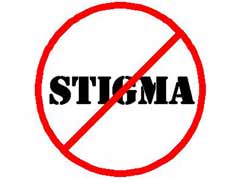by Joanne Steel
 asthmatic. Asthma is a chronic, progressive disease and relapse is a reality I face when I fail to manage it properly.
asthmatic. Asthma is a chronic, progressive disease and relapse is a reality I face when I fail to manage it properly.
I’m not a bad person, a crazy person or a weak person for failing to will asthma away.
This statement might seem odd. And it should, because when we have faulty organ systems – caused by genetics, exposure to toxins and/or trauma – it’s not our fault. I, like other asthmatics, deserve to receive the best available care so that my over-active auto-immune system doesn’t get in the way of living a healthy, productive life.
But if I replace asthma with addiction, does this argument lose any credibility for you?
I can admit it’s sometimes difficult to fully embrace the idea that asthma and addiction are on the same moral and medical playing fields. So much of alcohol and drug use is tied up in deeply embedded belief systems; stigma, misconceptions and myths distort very simple truths.
Addiction is a brain disease.
Addiction occurs in the area of the brain called the mesolimbic dopamine system that is not under conscious control.
The disease of addiction, just like asthma, can develop in people despite best intentions or character – 5-year-olds never plan to grow up to be meth addicts.
Drug addiction is insidious because it affects the very brain areas that people need to “think straight” and apply good judgment. Drugs rewire incredibly complex neuro-chemical pathways that give origin to our thoughts, emotions and perceptions.
People who have crossed the line from dependence to addiction exist in a state where the brain regards the drug as indispensable to survival as oxygen – taking precedence over health, family and employability. This is why addicted people continue to use despite catastrophic consequences.
And it’s these catastrophic consequences – identified solely with the person, not the disease – that fuel stigma.
Stigma stops 9 in 10 from seeking life-saving care.
Stigma is one of the cruelest and most challenging aspects of addiction because it traps individuals and families in secrecy, guilt and shame. Hiding addiction is a sensible choice when seeking help means losing a job, insurance or your child.
Even if brain science fails to defeat the grip stigma has on this disease, perhaps we’re able to generate compassion when we review the widely recognized risk factors that make so many sitting ducks:
- Genes: You’re four times more likely to become an alcoholic or three times more likely to marry one if you have alcoholic parents. At alumni meetings, we ask clients how many people grew up in families where addiction was present. Most hands go up.
- Childhood Trauma: One of the largest and longest-standing studies, the ACE (Adverse Childhood Experiences) Study, clearly makes the link between childhood trauma and long-term health and social outcomes. An ACE score of 5 or more increases the chance of becoming an injection drug user by 4,600%. Parental addiction is a major driver for increasing ACE scores as abuse, neglect, imprisonment, violence and mental health disorders often go hand-in-hand with addiction.
- Mental Illness: Anxiety, depression and other mood illnesses are very common with addicted people and families. As ACE Study lead researcher Dr. Vincent Felitti noted in a CBC radio interview, it’s not surprising that many people with physical, psychological and emotional pain get their “anti-depressants” from the street. In fact, crystal meth was the first prescription anti-depressant sold in the United States.
- Early Use of Drugs: Brains are very plastic and don’t stop developing until your early 20’s; chemicals are powerful disrupters and shapers of neurological wiring. Again, in Renascent alumni meetings, it’s common to hear people share that they started using (or were feed alcohol) at tender young ages.
- Social Environment: Families, workplaces and schools often normalize heavy drinking as a way to bond or belong – some people have the genetic and psychological capacities to escape the downward spiral while others are strongly predisposed.
Science, while still very young in addictions research, is beginning to build a case that some people are almost destined to become addicts. Does this excuse alcoholics and addicts from being responsible for their actions? No. And this is how stigma gains its foothold.
Addicts are responsible for their actions but they are not responsible for having a disease anymore than I’m responsible for having asthma. Drunks, crackheads and meth addicts are not responsible for being sick (and finding effective ways to self-medicate) but they are responsible for getting well.
Stigma gains further traction as we struggle with this paradox, polarizing the debate and obscuring the shared concerns of police officers, advocates, addicts, doctors, crown wards, law makers, mothers and educators.
We need to recognize that our common enemy is addiction, not the people suffering from the illness.
Bell Let’s Talk Day is an annual reminder that we all have a stake in fighting the stigma that keeps so many families from a solution. Help us break the cycle of addiction – never forgetting that we must stand by children, as for too long they’ve been the first and last helped.
In the writing of this article, I’d like to acknowledge inspiration from mentors working with the National Association of Children’s of Alcoholics and Drug Endangered Children’s Alliance as well as Renascent alumni of all ages who show me daily that recovery is one of the most precious gifts. I’d also like to acknowledge HBO’s website dedicated to fighting stigma.
Joanne Steel is Renascent’s Senior Manager, Major Gifts and Communication.
This article is a gem from our TGIF vault, originally published on September 5, 2013.
